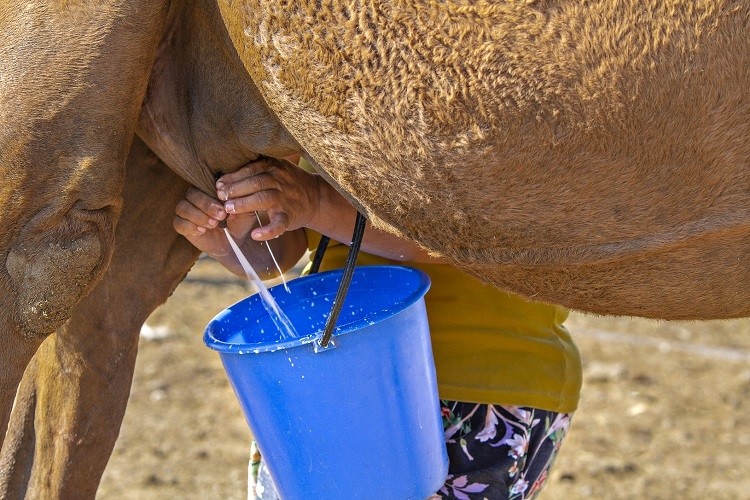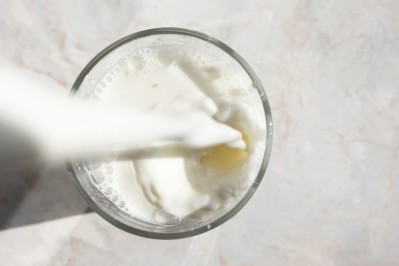Making camel milk 'safer': Researchers combat E. coli and salmonella with new lactic acid bacteria

While camel milk is somewhat of a rarity in Europe, the same cannot be said of Africa, where camels are considered a common dairy animal. Indeed, up to 9% of Africa’s total milk production comes from camels.
Compared to cow’s milk, camel milk is slightly lower in total fat and saturated fat, but on par with cow’s milk total calorie and protein content. Camel milk is also considered a source of iron and vitamin C.
Such nutritional benefits, however, can be compromised in Africa when disease-causing microorganisms contaminate the milk. This occurs when farmers, who may have poor hygiene, are unable to refrigerate fresh camel milk.
The milk naturally ferments, and when it is sold by farmers at roadside stalls or in local markets, it is often already contaminated with pathogens such as E. coli or salmonella.
A research project led by the Technical University of Denmark (DTU) and assisted by the University of Copenhagen and Haramaya University of Ethiopia is working to solve this issue, by making camel milk ‘safer’.
Danish ingredients supplier Chr. Hansen also partnered with the researchers, providing ingredients for several application trials. The Danish International Development Agency (DANIDA) contributed funding to the project.
Isolating ‘new’ strains of lactic acid bacteria
The researchers successfully identified new strains of lactic acid bacteria from raw camel milk. Using these bacteria as a starter culture, they were then able to acidify the milk and kill ‘large amounts’ of various disease-causing microorganisms in the process.
Five litres of milk was found to make enough starter culture to produce half a million litres of safe, fermented camel milk, they noted. However, they recommend that farmers heat-treat the milk to kill as many disease-causing microorganisms as possible before adding the starter culture.
To their knowledge, this is the first time research has shown these bacteria can be used to make camel milk products safer to digest.
“Starter bacteria multiply and grow in the milk,” DTU professor and lead author, Egon Bech Hansen, explained. “The benefit of using a defined starter culture is that you determine which bacteria will dominate the fermentation. The product quality will become more predictable and show less batch-to-batch variation.”
The culture is freeze-dried, rather than deep-frozen, which the professor said is more ‘convenient’. “Unless it is exposed to excessive heat, it will remain viable under simple storage conditions – like dry yeast,” he told this publication.
Potential for commercialisation
There is potential for the starter bacteria to be commercialised, Hansen revealed. In this case, additional flavours ‘in the direction of buttermilk or yoghurt’ may be added to customers’ fermented milk products to help mask the ‘acid taste’ associated with some cultures.
The lead author said a ‘local, low cost production’ in Ethiopia might be the simplest and most sustainable option for commercialisation. “In any case, an agreement for commercialisation based on the Nagoya protocol should be negotiated with the Ethiopian Bio-Resource Institute in Addis Ababa.”
Concerning relevant geographies, Hansen said all regions where camels are used as dairy animals could benefit from this discovery. In Africa, this means the Horn of Africa, Sahel, and North African countries. In Asia, the professor said the Middle East, India, Pakistan, Mongolia, and Central Asia could all benefit. “Milk from Dromedaries and Bactrian camels are similar,” he added.
Source: International Dairy Journal
‘Antimicrobial activity of novel Lactococcus lactis strains against Salmonella Typhimurium DT12, Escherichia coli O157:H7 VT− and Klebsiella pneumoniae in raw and pasteurised camel milk’
Published online 8 August 2020
DOI: https://doi.org/10.1016/j.idairyj.2020.104832
Authors: Esben Bragason, Tesfemariam Berhe, Dakalo Dashe, Kim Ib Sørensen, Mituku Eshetu Guya, Egon Bech Hansen.
























